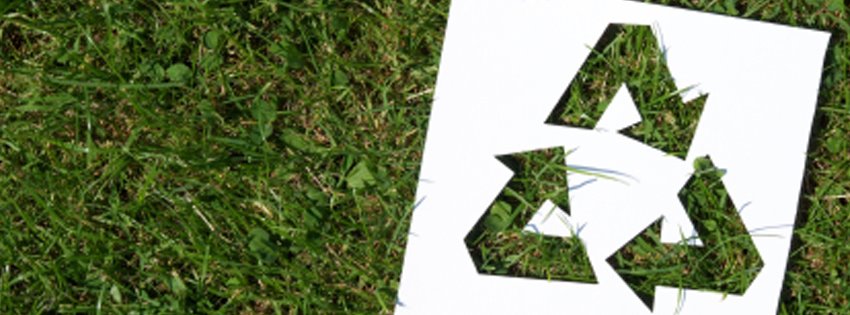Swamp Stomp
Volume 19, Issue 06
I would like to share our public comment on the 2019 WOTUS rule below. Be sure to send in your comments to EPA before April 15, 2019. Please feel free to use our comments to help you expand on any of the issues we have presented. You can comment on our post below, but it is more important that you send your thoughts and questions to the EPA. Try to avoid seminar comments and only send in thoughtful and insightful topics. The Agencies tend to ignore the bulk mail type comments. The link to submit your comments is here: https://www.regulations.gov/docket?D=EPA-HQ-OW-2018-0149
Best, Marc
Writing on behalf of the Swamp School, LLC I respectfully request that the government respond to my questions and comments pertaining to the proposed Waters of the US definition as published in the Federal Register on February 14, 2019.
The Constitution of the United States grants the US government certain powers to regulate interstate and foreign commerce under Article 1, Section 8 known as the “Commerce Clause.” This power extends to any activity that would effect an economic change between states, tribes and nations.
The United States government through its many agencies has published numerous reports documenting the economic importance of water resource management. These include studies on flooding, water quality, wildlife resources, agricultural management and many more. These underscore the economic important of aquatic resources associated with wetlands and waterways throughout the nation.
With the passage of the Clean Water Act, Congress formally acknowledged that it had a sovereign duty to protect the aquatic resources of the nation and adopted a policy that all wetlands and waterways were jurisdictional waters regardless of the size, source or direction of flow. This was demonstrated by the fact that in the initial round of nationwide permits released by the US Army Corps of Engineers (Corps), the nationwide 26 permit authorized fill into small headwater systems.
While this permit was extremely unpopular with environmental protection groups, it does acknowledge that the Corps had jurisdiction over these small ephemeral, intermittent, and perennial systems and was regulating what Congress had intended to protect.
In 2001, a decision by the US Supreme Court in the case of Solid Waste Agency of Northern Cook County (SWANCC) v. U.S. Army Corps of Engineers, resulted in a change of policy on what the Corps would regulate as waters of the US. This is the only case that has come before the Supreme Court that has resulted in a reduction of jurisdictional wetlands. However, this case has been misinterpreted with regards to isolated wetlands for years. The Court did not rule that isolated wetlands are non-jurisdictional rather, that the Migratory Bird Rule in of itself did not provide the commerce nexus to make the wetlands on the site, jurisdictional. The issue of whether the wetlands on site were jurisdictional was not resolved. That was not the case put before the Court. Simply put, the Migratory Bird Rule did not provide the jurisdictional nexus. However, the issue of what may provide the jurisdictional nexus was never discussed.
I respectfully request that the government respond to this comment with a confirmation and explanation of how the SWANCC decision has been interpreted in the proposed rule. Specifically, I am asking the Agencies to comment on the fact that the SWANCC decision has resulted in a misinterpretation by the Agencies, that all isolated wetlands are non-jurisdictional. This seems to be the basis for excluding many wetlands in the proposed rule and I am concerned that there may be a misrepresentation of fact and law in the rule.
The second issue of concern relates to how the proposed rule affects the farm community. It has been represented by the EPA that this new rule is somehow a win for the farmers. This is a gross misinterpretation of how wetlands affect farming.
The Food Security Act Manual defines wetlands as having the presence of hydric soils, wetland vegetation, and wetland hydrology consistent with the Corps wetland manuals. It does not make the distinction that a wetland must be a jurisdictional waters of the US in order to receive protection under the Food Security Act (FSA). The FSA provides subsidies to farmers who avoid wetland impacts and penalizes farmers who do impact wetlands by revoking subsidies as adjudicated by the National Appeals Division of the USDA.
In short, the proposed rule appears to remove the CWA violations from impact to some wetlands by farmers, but it does not address the FSA penalties. At issue, is that under the new rule, the USDA, EPA, and Corps all have a different definition of what a wetland is.
How does the US EPA and Corps plan on addressing the issue of farmers losing farm subsidies as a result of impacting a non-jurisdictional wetland? At the very least they should be informed of the risk.
During the December 11, 2018 presentation, Secretary Wheeler (USEPA) went to great lengths to describe how easy it should be for anyone to look out onto the landscape and know what is jurisdictional and what is not. This is overly simplified and very unrealistic. Wetland science has evolved over the years and we have a much greater understanding of the nature of wetlands and their borders than we did when the CWA was first passed.
Land management is a complex process requiring many different disciplines to safely and responsibly develop a project to ensure highest and best use, balanced with the least possible environmental impact. Imagining that someone could just look out across the landscape and divine the presence of jurisdictional wetlands heralds us back to a time when rivers were catching fire and was a major reason for the passage of the Clean Water Act in the first place. Quite frankly, it undermines the credibility of the EPA as it represents a failure to uphold the laws with which they are tasked to enforce and a complete disregard for the state of the science of wetlands.
Furthermore, if anyone can identify a wetland, then it is required that the EPA and Corps present an economic analysis of the job loss associated with the civil and environmental engineering professions. A review of the Bureau of Labor Statistics data for wetland-related jobs estimates that over 500,000 individuals work with and around wetland science. A 500,000-person layoff would certainly have a significant economic impact that needs to be addressed. To date, this has not been discussed by the Corps or EPA and I respectfully request that this be addressed with an economic analysis as required by the Administrative Procedures Act.
In addition, there is an entire wetland and stream restoration industry that would be directly affected by the loss of wetlands and the streams being regulated. This is a billion-dollar industry with individual projects often in the millions. If there is no longer a need to replace certain wetlands and streams that have been lost, then there would be a significant reduction in wetland and stream mitigation services. The lack of regulation for what has been historically regulated would result in significant tax revenue loss related to this industry alone. Can the Agencies provide a detailed analysis of the tax revenue lost and a description on how they plan to mitigate this significant economic impact to the US Treasury?
To counter an expected Agency response to the aforementioned tax loss it is expected that the Agencies would cite some sort of economic gain as a result of not having to spend money on mitigation by a permittee. However, even if a wetland or stream were to be deemed non-jurisdictional the permittee would need to spend significant money and time to verify that the area in questions is in fact non-jurisdictional. The fines for filling a wetland or stream are significant, and a landowner would be undertaking an extremely risky process to do it on their own despite Secretary Wheeler’s comments.
Most land developers are more concerned with uncertainty and time delays for their projects. It is unlikely that they would proceed with some sort of “do-it-yourself” business model for land assessment. Because it is very unclear what constitutes a jurisdictional nexus, this tends to be their biggest concern. Most developers would rather write a check for mitigation and proceed with their project, rather than some sort of protracted jurisdictional review. Time is truly money and generally the cost of mitigation, while expensive tends to fall in line with the cost of doing business and has proven not to be an impediment. What has proven to be an impediment is long delays for jurisdictional reviews often running into years. Please explain the process of how the Agencies will be accelerating the jurisdictional review process, especially “jurisdictional determination only” requests as outlined in the Corps’ RGL 16-1. Please also detail the costs associated with the new hires EPA and the Corps will need to bring on to manage these jurisdictional determination requests. If this is an unfunded mandate to the Agency’s rank and file, then please detail the time delays associated with the current and projected workload.
On a technical note, there is a significant issue with the EPA and Corps understanding of the water cycle. This seems odd as the last administration published a detailed report documenting the connectivity of wetlands to downstream waters. It would appear that both the Corps and the EPA are abandoning the scientific findings of their report. Is this to satisfy a political agenda or are there new scientific discoveries that are the basis for the proposed rule? I would appreciate a direct answer to this question.
The proposed rule excludes both ephemeral systems and groundwater. As it would appear the Agencies need a review of the water cycle I will explain. When it rains water falls from the sky creating storm water (ephemeral flow). This flow makes its way across the landscape infiltrating into the ground and creating groundwater. Some wetlands and many intermittent and perennial stream systems are intersected by groundwater as the systems major source of water. It would appear that this groundwater nexus (often associated with the hyporheic zone) would not result in a water of the US. This is at complete odds with the aforementioned EPA Science Advisory Board’s report.
Similarly, since these same systems receive rain on a regular basis, this is also a major source of non-jurisdictional hydrology. I am unclear as to what other sources of water would support any wetland or stream system. Could the EPA and Corps clarify where the water would have to come from in order for a wetland or stream to become a waters of the US? High humidity, perhaps?
The proposed rule states that is is based upon the “Scalia” opinion in the Rapanos case brought before the Supreme Court. At issue, is that there was no majority opinion in that case and it was vacated. How do the Corps and EPA plan to reconcile the fact that the entire premise of the proposed regulation is based upon a vacated and undecided case? The result of the case was that the wetlands in question were deemed jurisdictional by the lower courts and Rapanos had to pay a fine and mitigate and Carabell did not get his permit. Basing any regulation on a failed court ruling seems irresponsible and I would appreciate an explanation on the Agencies justification for this.
The issue of ditches is also a concern. If a wetland or waterway results in some sort of interstate commerce it is up to the government to regulate it (Article 1, Section 8 of the US Constitution). This has been the test brought before the courts for years. The only purpose of a ditch is to drain the landscape for some economic purpose. A roadside ditch keeps water off the road so that interstate trucking can proceed. A farm ditch allows a farmer to drain the land so they can grow crops that they can sell to other states or nations. Flood control ditches are used to prevent or reduce economic hardship in flood prone areas that may result in job and property loss. In short, the only purpose of a ditch is to support commerce. Therefore, should not all ditches be regulated as waters of the US?
Lastly, there is the issue of how the states will manage a non-waters of the US. These are not assumable 404(g) waters. If the state wishes to regulate a vernal pool for example, it would have to pass legislation to do so. As there is no federal jurisdiction, the state is left to “condemn” these types of wetlands under an eminent domain process and the landowner would be entitled to some compensation for the loss of use pursuant to the Uniform Relocation and Assistance Act. It is unlikely that the states have the funds to do this. So, it is a bit disingenuous to assume that the states can just pick these up. What mechanism would the states use to manage these non-404(g), non-jurisdictional wetlands?
In summary, I believe that this proposed regulation is fatally flawed and will result in much more confusion, legal challenges, job loss, and economic hardship. It was always Congress’s intent that all wetlands and waterways were waters of the US. The problem arose in the last administration’s attempts to redefine what a water of the US is. The idea that something is not a waters of the US means that you can do whatever you want to it is misguided, especially if you are a farmer. Perhaps, rather than focusing on the definition, the Corps could reexamine its Nationwide permit program to allow for more latitude in some of the permits.
On a final note, I know I have been highly critical of this proposed rule. I want to issue a shout out to both the EPA and Army Corps rank and file. I know very few of you have had anything to do with the rule and my comments are not directed at you. I have the greatest admiration for the hard work you do and I know that you are working under very difficult times. It is a shame that this topic has become a purely political one and I look forward to a time when we can all get back to work managing our natural resources in a responsible manner.
Respectfully,
Marc Seelinger, Director
The Swamp School














